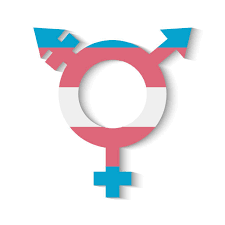Understanding what a transgender female looks like goes beyond mere physical appearance; it involves a deep appreciation for the journey of identity, expression, and individuality. Transgender females, or trans women, are individuals who were assigned male at birth but identify and live as women. This article aims to provide insight into who transgender females are, debunk common misconceptions, and celebrate the diversity within this community. It’s important to remember that there isn’t a one-size-fits-all definition or appearance, as each trans woman’s experience is unique.
As society continues to evolve in its understanding of gender identity, it becomes essential to foster awareness and acceptance. We’ll explore various aspects of the lives of transgender females, from their physical appearance and fashion choices to their emotional journeys and representation in media. Ultimately, this article aims to appreciate the beauty in diversity and recognize the valuable contributions of transgender females to our society.Forced Male Chastity StoriesWhat Is A Transsexual Woman
Understanding the Basics: Who is a Transgender Female?
A transgender female is someone who has been assigned male at birth but identifies and lives as a woman. This identification may be affirmed through a variety of means, including social changes like adopting a new name and pronouns, changing appearance through clothing and grooming, or seeking medical interventions such as hormone therapy and surgeries. It’s important to emphasize that being transgender is about one’s gender identity, which is personal and can differ from societal norms.
The journey of a transgender female can be diverse, with some choosing to undergo medical procedures to align their physical appearance with their gender identity, while others may not. What remains constant, however, is the recognition of their lived experience and the respect for their identity. Understanding this basic distinction opens the door to empathy and support for trans individuals and their experiences in a world that can often be challenging.
Common Misconceptions About Transgender Females Explained
One major misconception is that transgender females are simply "men in dresses." This inaccurate stereotype fails to recognize the complexities of gender identity. Trans women experience their gender in ways that are valid and real to them, and reducing their identity to mere appearances dismisses their lived experiences and struggles. It’s crucial to approach discussions with respect and understanding, acknowledging that gender is a spectrum rather than a binary construct.
Another misconception is that all transgender females undergo surgeries or hormone treatments. While many do choose these options as part of their transition, it isn’t a universal path. Some may find affirmation in their identity without any medical procedures, and that choice should be respected. Acknowledging these misconceptions helps create a more inclusive environment that honors the diversity within the transgender community.
Physical Appearance: What to Expect and Celebrate
When it comes to physical appearance, transgender females can look incredibly diverse. Some may undergo hormone replacement therapy (HRT), which can lead to physical changes such as breast development, softer skin, and body fat redistribution. Others may choose to have surgeries, like breast augmentation or gender-affirming surgeries, while still, many may opt to express their womanhood without medical modifications. This diversity in appearance is something to celebrate rather than pigeonhole into a single image.
It’s essential to recognize that beauty comes in many forms. Transgender females can embody a wide range of aesthetics, from feminine to androgynous, and everything in between. Each person’s appearance is unique to their personal style and journey. Embracing this variety enriches our understanding of beauty and challenges societal norms about femininity and gender expression.
Fashion Choices: Style Tips for Transgender Females
Fashion can be a powerful tool for self-expression, and for many transgender females, it’s a significant part of their journey towards embracing their identity. Whether someone prefers bold colors, soft pastels, or minimalist styles, clothing can help convey how one feels inside. Exploring different styles allows trans women to discover what makes them feel confident and authentic. Tips for finding that unique style include experimenting with different cuts, fabrics, and accessories, thereby creating a wardrobe that reflects one’s personality.
Additionally, connecting with supportive communities—both online and offline—can provide inspiration and resources for fashion choices. Many trans women find empowerment through sharing their fashion journeys and learning from others. Being part of a community helps to foster a sense of belonging and encourages self-acceptance, making the process of finding one’s style even more fulfilling.
Makeup and Grooming: Enhancing Natural Beauty
Makeup can serve as a transformative tool for transgender females, helping them to enhance their features and express their femininity. While not all trans women choose to wear makeup, many find joy in experimenting with products to create looks that make them feel beautiful and confident. Starting with the basics, such as foundation, eyeliner, and lipstick, can help achieve a polished look that aligns with personal preferences.
Grooming routines, including hair and skincare, can also play a significant role in self-expression. Whether opting for long flowing locks, a chic bob, or a shaved head, hair can be a reflection of one’s style. Similarly, a consistent skincare regimen helps maintain healthy skin, aiding in the overall aesthetic. Ultimately, the goal is to enhance one’s natural beauty and feel comfortable in one’s skin, whatever that may look like.
Emotional and Psychological Aspects of Transition
The transition process for transgender females can be as much about emotional and psychological growth as it is about physical changes. Many trans women experience a range of emotions, including joy, anxiety, and sometimes sadness during their journey. It’s important to acknowledge that coming to terms with one’s gender identity often involves deep introspection and self-discovery, which can be both liberating and challenging.
Support systems—whether through friends, family, or professional counseling—can play a pivotal role in helping trans women navigate their emotional landscape. Mental health is a crucial aspect of the transition process, and seeking support is a sign of strength. Encouraging open conversations about feelings and experiences can foster understanding and empathy within the community and beyond.
Representation in Media: How Transgender Females Are Portrayed
Media representation of transgender females has evolved in recent years, but there is still a long way to go. Historically, trans women have often been misrepresented or reduced to stereotypes, which harms their visibility and societal perception. Thankfully, there are now more authentic portrayals of transgender females in television, film, and literature, which provide a platform for authentic stories and experiences.
Shows and movies featuring transgender characters can help educate the public and challenge misconceptions. When trans women are involved in the storytelling process, whether as writers, directors, or actors, it ensures that their narratives are portrayed with authenticity and respect. Positive representation in media not only validates the experiences of transgender females but also inspires future generations to embrace their identities unapologetically.
Celebrating Diversity: Transgender Females in Society Today
Today, transgender females are making their mark across various sectors of society, including politics, fashion, arts, and activism. These women are breaking barriers and advocating for their rights, contributing to a broader dialogue on gender identity and equality. The visibility of trans women in leadership roles serves as an inspiration for many, showcasing that diverse voices deserve to be heard and respected.
Moreover, as society becomes increasingly aware of and supportive of gender diversity, there’s a growing recognition of the unique challenges faced by transgender females. Advocacy for policies that promote equality, healthcare access, and protection against discrimination is vital in creating a more inclusive environment. Celebrating the contributions of transgender females helps foster a sense of community and acknowledgment, paving the way for a society that values diversity in all its forms.
In summary, understanding what a transgender female looks like involves recognizing the diversity of experiences, identities, and appearances within this community. There is no singular way to be a woman, and the journey of each transgender female is unique and deserving of respect and celebration. By dispelling misconceptions, supporting representation in media, and fostering acceptance, we contribute to a world that embraces and honors the rich tapestry of human identity. Celebrating the beauty and resilience of transgender females is not only a step toward inclusivity but also an essential part of understanding the human experience as a whole.


